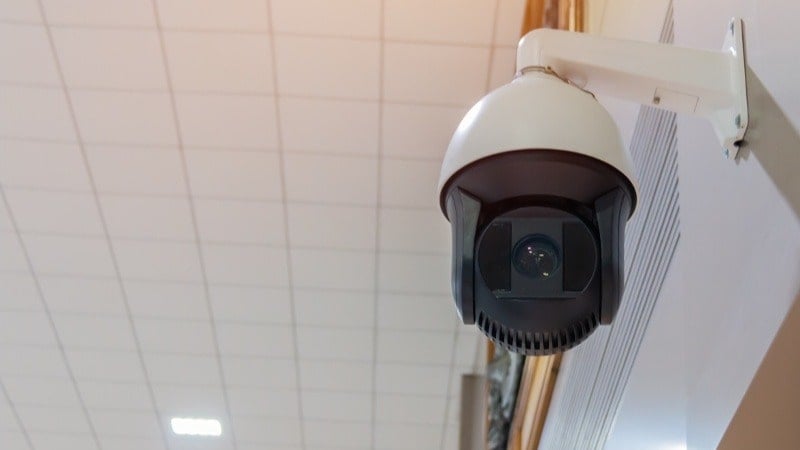Strategic Security Camera Placement: Maximizing Protection Through Integration
by Brothers Fire & Security | Mar 21, 2025 | Security System | 0 comments

Better protection comes with smarter prevention. And this is precisely the role of security cameras. They provide
Better protection comes with smarter prevention. Security cameras serve as your building's vigilant guardians, scaring away intruders and acting as a threat deterrent. They’re one of the best investments building owners can make as they lower the risk of costly incidents such as vandalism and theft.
However, security cameras are only as effective as their placement. The presence of security cameras is not enough. They must be placed strategically and connected intelligently with complementary systems to ensure maximum coverage, effectiveness, and return on investment.
Here are some security camera placement tips to get you started.
1. Monitor All Entry Points
Entrances are your first line of defense. Make sure you have at least one camera covering every entry and exit point. You may need multiple units placed at different angles to ensure maximum visibility. Think of all the obvious points of entry: side doors, ground-floor windows and doors, and gates.
Integrating surveillance with access control systems creates a comprehensive solution that matches badge swipes with video footage. This quickly shows if the person using a badge is actually the authorized employee, stopping unauthorized entry with borrowed or stolen cards.
For larger buildings, video coverage in basements and parking spaces is essential, even though they may not be considered high-traffic areas. This approach deters potential intruders and makes residents or tenants feel much safer. When someone uses a badge at unusual times or locations, the system can automatically send alerts, helping security teams respond quickly to possible security issues. Motion-triggered lights in these areas go a long way in increasing your people’s sense of safety and improving video quality.
2. Cover the Entire Perimeter
Identify critical areas that need to be monitored throughout your facility. These could be areas where sensitive documents or expensive equipment are stored, as well as high-traffic areas. Adding cameras in quiet or restricted areas helps prevent problems before they happen.. Remember to install cameras in stairwells, elevators, and rooftops to spot any suspicious activity. Good lighting is crucial–without it, your footage may be too dark or blurry to be useful. The goal is to cover the entire perimeter by avoiding blind spots. Conduct a site survey and identify any areas that may not be covered by the cameras. Blind spots are weak spots that provide an opportunity for nefarious behavior.
When your cameras connect with your access control system, security becomes even stronger. The combined system creates a complete picture of who's going where in your building, automatically flagging when something doesn't match up.
3. Install Cameras at the Right Height and Angle.
Installing cameras at manufacturer-recommended heights gives you better coverage, though there's often a balance to strike between overview visibility and capturing identifying details such as facial features or license plate numbers. Calculate the optimal height for camera placement that provides both coverage and necessary detail. Industry standards typically recommend mounting heights of 9-10 feet for interior cameras, though this varies based on lens specifications and coverage requirements.
When cameras are positioned correctly and connected to your access system, everything works together with matching time stamps. This makes investigations much easier – security staff can quickly find exactly who entered an area and see the video that goes with it, all in one place.
Consider implementing both visible and hidden cameras, as visible ones are more prone to theft and vandalism. It’s critical that each camera is selected based on what you want to see. If you have sixteen unit systems, it is likely that several different models of cameras may be required.
4. Get Professional Help
Finding the right spots for your security cameras is key to ensuring your security system is effective. Poorly placed cameras are easily tampered with and can create blind spots. A professional security system installer will carefully examine your building, identify potential weak points, and design an effective camera layout. It’s also advisable to have a professional review your system every few years to ensure that your cameras are still capturing what you want to see.
Professionals can also help you connect your cameras with your access control system. This combined approach saves money by reducing IT costs, simplifies training with one easy-to-use interface, and helps your team respond faster to security issues. The unified system gives you valuable insights beyond just security concerns.
Strategic camera placement, especially when integrated with modern access control systems, creates a robust security ecosystem that protects your assets while providing valuable operational insights.
Schedule a comprehensive security assessment with Brothers' certified technicians to identify vulnerabilities and optimize your integrated security solution.
Recent Posts
- Hidden Risks: Why Aging Fire Systems Need More Than Just Annual Inspections
- Strategic Security Camera Placement: Maximizing Protection Through Integration
- Why NFPA 72 Makes Integrated Fire & Security Monitoring Systems Essential
- Benefits of a Building Access Control System
- Ultimate Guide to Fire Extinguishers: Testing, Inspections, Maintenance
